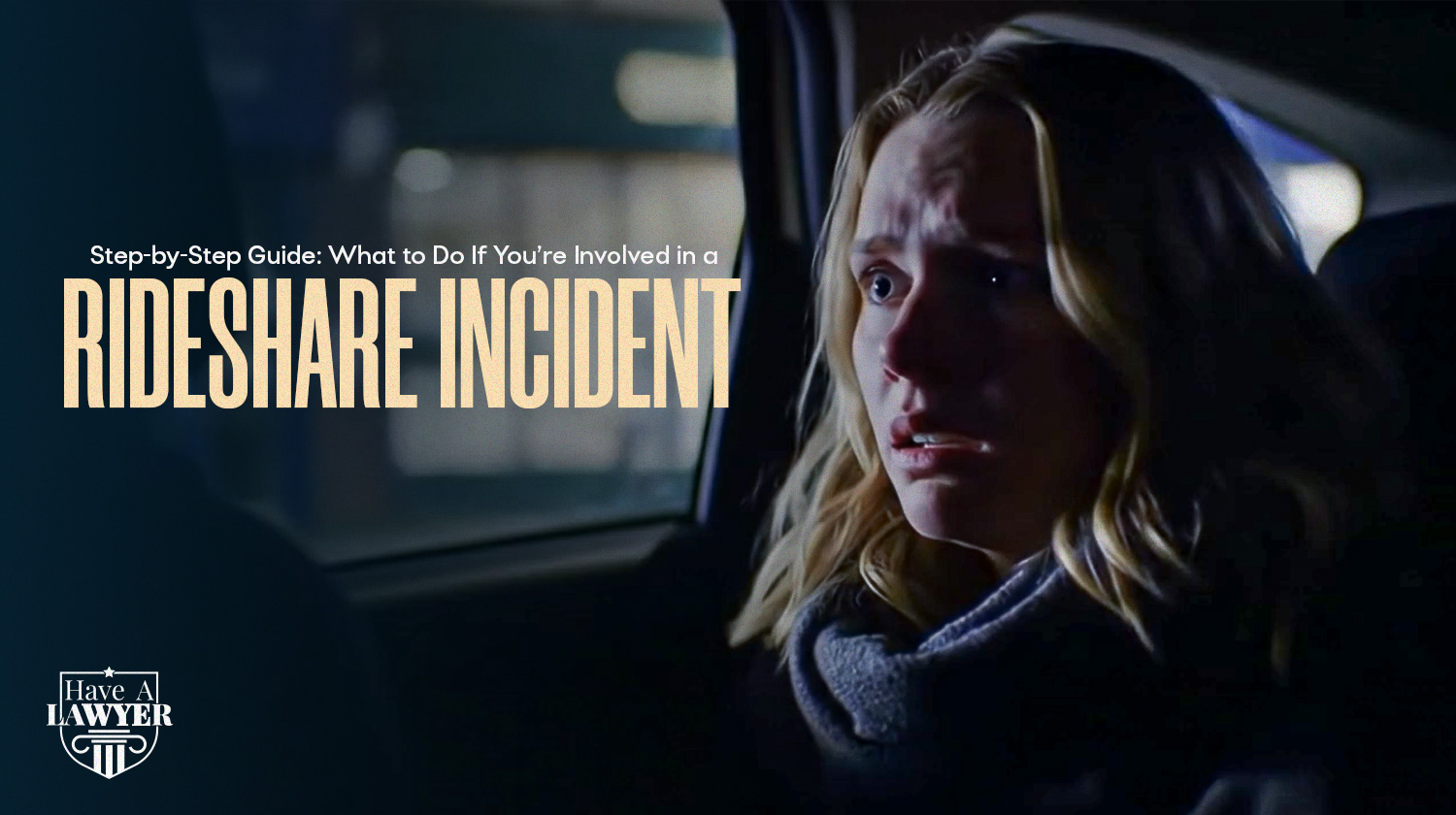What Is a Rideshare Incident?
A rideshare incident refers to any crash or event causing injury or property damage during a trip arranged through a ridesharing service like Uber or Lyft. These cases often involve added complexity compared with regular car accidents—such as determining fault, navigating multiple insurance policies, and reviewing app-based trip records and the driver’s status at the time of the incident.
Being involved in an accident during a rideshare trip—whether as a passenger, driver, or bystander—is stressful. Knowing what to do next is crucial. In some situations, an incident like this can lead to a Rideshare Driver Lawsuit.
Follow these steps to protect your health and your rights.
1. Make Safety Your First Priority
Your health comes first. Check everyone involved for injuries. If anyone appears hurt or unwell, call emergency services immediately. Move to a safe location if possible and avoid standing in traffic. Even minor symptoms—like soreness or dizziness—can signal a more serious issue. Seeking prompt medical care both protects you and creates an important record of any injuries.
2. Call the Police and Get a Report
If anyone is hurt—or even if the incident seems minor—call the police. A police report documents what happened and often makes insurance claims smoother. Provide a clear, concise account of what you saw and experienced. In rare cases involving multiple victims or systemic issues, incidents may be consolidated into mass tort cases. Always ensure officers understand what happened and how it affected you.
3. Document the Scene Carefully
Evidence strengthens your claim and can simplify insurance processing. If you’re able, gather:
- Photos of vehicle damage, road conditions, and any visible injuries.
- Screenshots from the rideshare app showing the driver’s name, trip details, and route.
- License plate numbers, vehicle make/model, and driver contact information.
- Witness names and contact details; consider brief audio notes or written statements.
4. Report the Accident to the Rideshare Company
Use the rideshare app or website to report the incident as soon as possible. This triggers the company’s internal process. Reporting promptly is important whether you pursue individual relief, a Rideshare Driver Lawsuit, or contribute evidence to a broader mass tort case.
5. Seek a Medical Evaluation (Even If You Feel Fine)
Adrenaline can mask injuries. Get checked by a medical professional right away to protect your health and to create documentation. Keep all medical records, bills, and visit notes to support any future claim.
6. Consult a Rideshare Accident Lawyer If Needed
An experienced lawyer can identify which insurance policies apply, handle negotiations with insurers, and pursue maximum compensation. Many offer free consultations and can advise whether your situation fits a Rideshare Driver Lawsuit or a larger mass tort case. They can help:
- Clarify which insurance coverage applies.
- Negotiate with insurance companies.
- Maximize compensation for injuries and losses.
7. Act Within the Legal Time Limit
Each state has its own statute of limitations for injury claims—often between 1 and 4 years. Act promptly to avoid losing your right to seek compensation.
Conclusion
If you’re involved in a rideshare accident, prioritize safety: check for injuries and call emergency services if needed. Always obtain a police report, take photos, collect witness information, note the vehicle’s plate number, and save trip details from the app. Report the incident to the rideshare company, and get a medical evaluation even if you feel fine. In some cases, a lawyer can guide you through a Rideshare Driver Lawsuit or participation in a mass tort. Act quickly—deadlines apply. Stay calm, put safety first, document thoroughly, and report accurately.


